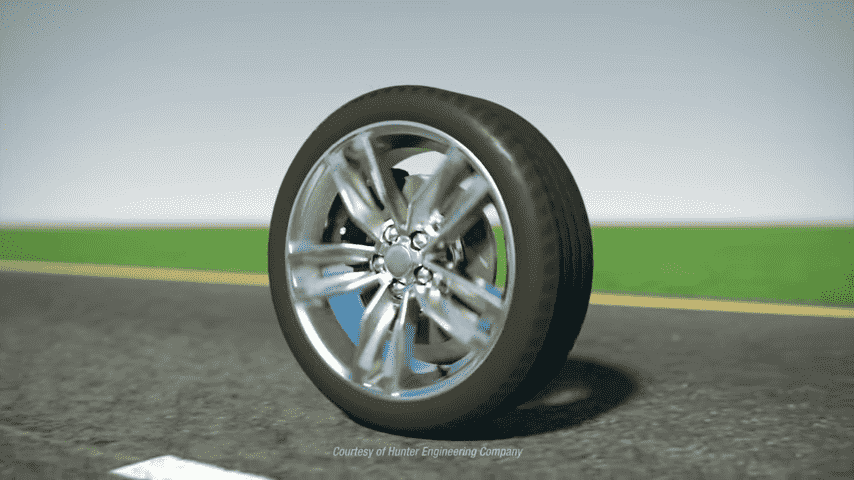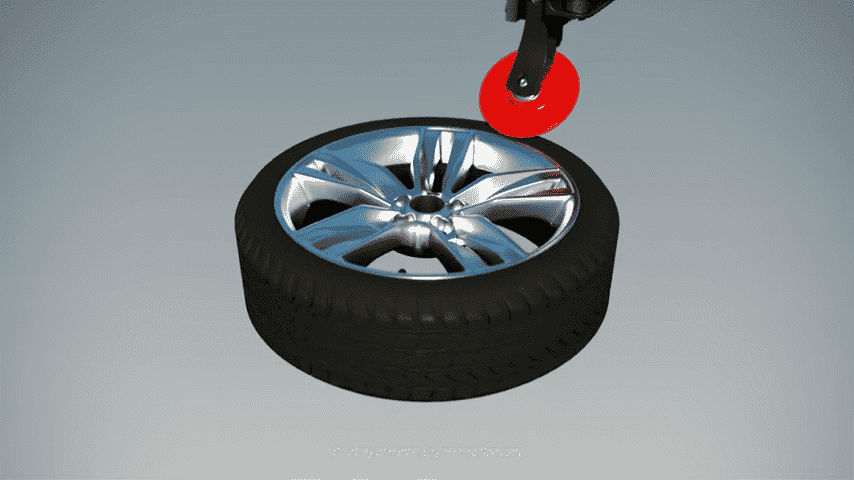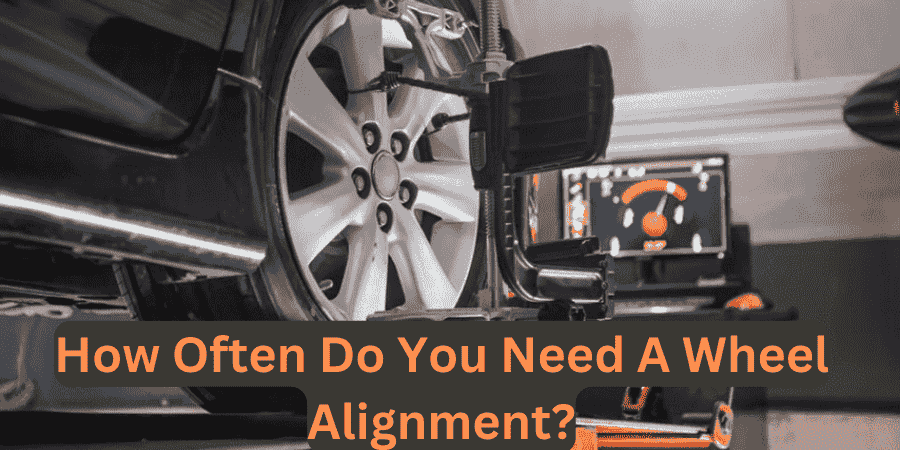Have you ever felt your car pull to one side or seen your tires wear out in different places? These are signs that your wheels may need to be aligned. Not only does keeping your wheels balanced help your car go straight, but it’s also good for safety, makes your tires last longer, and saves you money on gas. We’ll talk about wheel alignment, why it’s important, how often you should get it done, and what can change how often you need it.
In general, every 2 to 3 years is enough time to get your wheels adjusted. For your safety, you should align the wheels every time you change the oil.
What Is A Wheel Alignment?

Wheel alignment is an important part of regular maintenance that ensures your car’s wheels are aligned the way the manufacturer says they should be. In particular, camber, toe, and caster angles must be changed to fit the wheels better to the vehicle’s body and each other.
Optimizing tire performance and vehicle control, proper alignment ensures that all four wheels are aligned and perpendicular to the ground. A qualified technician precisely measures and modifies these angles during alignment using specialist equipment.
Why Wheel Alignment Matters?
Safety Concerns
Make sure your aligned wheels handle the car correctly during emergency operations. If your wheels are not aligned right, driving can be dangerous and hard to control.
Impact on Tyre Wear
When your tires are not lined up right, they wear out unevenly, so you need to replace them more often. Tires that wear unevenly can also blow out, which is dangerous.
Influence on Fuel Efficiency
When a car is properly aligned, it has less rolling resistance, which can improve fuel efficiency. Misaligned wheels can cause your car to work harder and consume more fuel.
Comfort and Handling
If your car isn’t misaligned, it’s quieter, drives smoother, and is easier to control. If you notice your car drifting or the steering wheel vibrating, it’s probably time for an alignment.
Signs You Need a Wheel Alignment
Uneven Tire Wear
Check your tires regularly. If you notice that some tires are wearing out faster than others, it’s a clear sign that your wheels are misaligned.
Vehicle Pulling to One Side
If your car drifts to the left or right when driving straight, you might need an alignment.
Steering Wheel Vibration
If your steering wheel is moving, it could mean your wheels are not lined up right, or your suspension is broken.
Off-Center Steering Wheel
When you drive straight, your steering wheel is not in the center, which is also a sign that you need the wheel aligned.
How Long Does An Alignment Take?
How long it takes to do a wheel alignment also depends on the type of alignment that needs to be done and how experienced the techs are. Most of the time, it takes 30 minutes to an hour.
To be clear, it is important to stress that they shouldn’t compromise on quality just to get a lot of work done quickly. It is important to make the most of the time you have to wait by reading a magazine, checking your email, or looking at what the service center has to offer right now.
How Often Should You Get a Wheel Alignment?
How often wheel alignments are done depends on a number of things, such as how you drive, the state of the road, and what the manufacturer recommends. Getting your wheels aligned should be done about every 6,000 to 10,000 miles, or once a year at the very least.
On the other hand, you should get an alignment sooner if you drive on rough roads, hit potholes a lot, or see signs of misalignment like uneven tire wear or steering drift. Regular checks are a good way to keep your car in good health because they make sure it runs well, stays safe, and tires last a long time.
Factors Affecting Wheel Alignment Frequency
- Road Conditions: Alignments need to be done more often to fix problems caused by rough roads and obstacles.
- Driving Style: Driving aggressively, like making fast turns or stopping quickly, can make alignment problems worse.
- Vehicle Type: Vehicles that are heavier or have more complicated suspension systems may need alignments more often to keep them running at their best.
- Maintenance History: Misalignment can be avoided by checking and maintaining the suspension and steering parts on a regular basis.
- Manufacturer Recommendations: Following the alignment times listed in your car’s manual will keep your tires properly aligned and make them last longer. Checking and making changes to these things on a regular basis will help keep your car safe, well-balanced, and running well overall.
Advantages Of Having Your Car’s Wheels Aligned

Aligning your car’s wheels offers several advantages, enhancing both performance and safety:
- Improved Handling: Proper alignment ensures your vehicle responds predictably to steering inputs, enhancing control and manoeuvrability on the road.
- Extended Tyre Life: Even tire wear resulting from alignment prevents premature tire replacement, saving you money in the long run.
- Enhanced Safety: Correct alignment reduces the risk of accidents by maintaining stability and preventing unexpected steering deviations.
- Fuel Efficiency: Properly aligned wheels reduce rolling resistance, improving fuel efficiency and saving money at the pump.
- Reduced Maintenance Costs: Preventing uneven tire wear and minimizing strain on suspension components through alignment lowers overall maintenance expenses.
Conclusion
Keeping your wheels aligned is vital to vehicle maintenance that impacts safety, tire longevity, and fuel efficiency. Regular checks and adjustments can save money and keep your car running smoothly. Don’t wait for visible signs of misalignment; make it a part of your routine maintenance schedule.
FAQs
How long does a wheel alignment take?
A wheel alignment typically takes around 30 minutes to an hour, depending on factors such as the complexity of the alignment needed.
Can wheel alignment affect braking?
Yes, improper wheel alignment can affect braking by causing uneven tire wear and compromising vehicle stability, leading to longer stopping distances and reduced braking effectiveness.
How much does a wheel alignment cost?
The cost usually ranges from $75 to $150, depending on your location and vehicle type.
Do I need an alignment after replacing the tires?
Yes, getting a wheel alignment after replacing tires is advisable to ensure they wear evenly and your vehicle handles correctly.
What happens if I ignore wheel alignment issues?
Ignoring wheel alignment issues can lead to uneven tire wear, decreased fuel efficiency, poor vehicle handling, and increased risk of accidents.
What’s Included in That Alignment?
An alignment typically includes assessing a vehicle’s suspension components, adjusting angles such as toe, camber, and caster, ensuring proper tire contact for optimal handling, and enhancing tire longevity.

